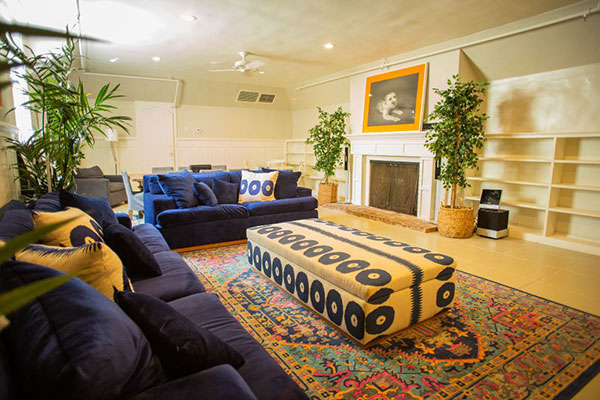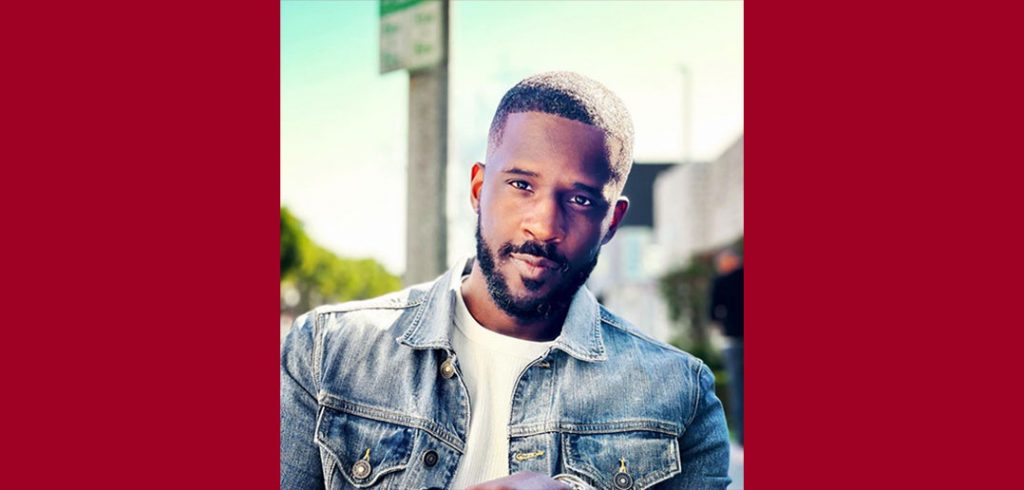Prater launched Los Angeles Room & Board two years ago to support community college students in California. Much of that support takes place at Opportunity House, a 50-plus-bed residence in LA’s Westwood neighborhood that provides students with affordable housing, free meals, and a strong community to help get them to graduation.
Oprah Winfrey highlighted Opportunity House in her O Quarterly magazine this past summer, calling it a “triumphant story,” and Prater and several of the home’s residents were featured on the TODAY show earlier this month.
“I am very keenly aware of the power of higher education to transform lives,” Prater told TODAY. “If I can get these students through college, the opportunity that will unfold before them is limitless.”
Prater began working with college students at Central Michigan University, where he was a resident assistant while earning a bachelor’s degree in communication. At Fordham, he was a resident director at Queen’s Court Residential College. In 2013, he began working at California State University, Northridge, earning an Ed.D. in educational leadership and policy there in 2018. And from 2016 until March 2020, he worked full time in the dean of students’ office at California State University, Los Angeles.
Fordham Magazine caught up with Prater to talk about his educational journey, how it informs his work at LA Room & Board, and what’s at stake—for the workforce and nation—if students’ needs aren’t addressed.
Talk about your educational journey. Why did you leave school, and what brought you back to it?
I dropped out of school at age 16. I’m the 12th born of 14 kids. When my mom died unexpectedly, it was just my dad and the 14 of us in a three-bedroom house on Detroit’s west side. He was working 12- and 14-hour days at Ford Motor Company to keep the lights on and keep us all fed. As happens when kids are without a lot of supervision, they make poor choices, and so I just was not doing well academically. I think that dealing with my mom’s death threw me into a bit of a tailspin.
My dad had this “18 and out rule” because there’s so many of us. I wasn’t prepared for that at all, and we didn’t have many conversations about money, so I got evicted from my first apartment. I got evicted from another place. I did the whole couch-surfing thing—lived out of my car. That period between 18 and 23 was really touch-and-go.
I finally got my GED at community college and from there, I applied for Central Michigan University and really rediscovered my love for learning. Once I got that chance at school again, I just kind of dove into it headfirst.

Describe your experience working as a resident director at Fordham.
What I loved when I was a resident director is those were super-driven, super-focused students. I saw these students from all over the country who were just bright and creative. It was an inspiration to be around those students, to be honest. It was just a good time, watching students learn and grow and succeed and thrive. I really cherish my time at Rose Hill.
What was your light-bulb moment for starting LA Room & Board?
When I moved to California in 2013 and started to pursue my doctorate, I felt like the issues of student homelessness and student hunger really became salient to me. When you think about student homelessness, people think abject people on the streets, but for students, how it presents is sleeping in your car, couch-surfing, or sometimes even living in a shelter.
I read this book called Back to School: Why Everyone Deserves a Second Chance at Education, and it changed everything for me. People were struggling to get through school, but they were hungry about getting their education. This life and economics just got the best of them. That book made me think about my students at California State, and it made me think about my own experiences, and I was like, “I’ve got to do something about this. I can’t let this go on.”
So what’s the deal? Why is this such a problem?
A lot of the conversation about higher education has been about college access. How do we swing open the doors to the ivory tower? How do we make them wider so that more folks who have been historically excluded from this space can have access?
All these different “bridge” and opportunity programs get students into the university, but we’re still having an issue getting students to graduate. It’s not because they’re not smart. It’s not because they don’t have the intelligence. It’s because they’re dealing with so much else. You’re working 40 hours a week to help with your finances at your home. Well, it’s hard to be a good student when you are trying to support your family. Our students are struggling with their basic needs: housing, food.

Opportunity House opened last September. What does it mean for students to live there?
We guarantee housing for two years. The students pay $300 a month. In addition to providing housing, we partner with a restaurant in LA called Everytable to provide two meals daily to students who need them. We provide a comprehensive set of support services that include tutoring and academic coaching and workshops on financial literacy.
We offer mental health and wellness services to make sure our students are grounded and that we create a culture of wellness and self-care, emphasizing the importance of therapy and mental health. We also have job readiness and career development, mentoring and leadership development, workshops for our students that talk about life skills—how to become a leader in your own personal life.
It’s not just about housing for us. It’s about how can we set them up for success—inside the classroom, in the marketplace, in their personal lives, in their community.
How are you getting the word out to students in need?
We partner with the colleges and universities across LA, and so we’ll tap into the state’s Educational Opportunity Program. We’ll tap into the Guardian Scholars Program, which is designed to support current and former foster youth in college. We’ll say, “Hey, if you learn about a student who is experiencing homelessness, let us be a resource.” We talked to UCLA. We talked to a couple of local and nearby community colleges. Somehow the word got out: We ended up having 300, almost 400, people apply for 53 spots.
Are there other housing solutions your nonprofit is exploring?
We’re not advocating for the construction of new buildings per se; we’re trying solidly to maximize the space that already exists. There are empty spaces like the Opportunity House or our forthcoming Pasadena location, but are there empty dorm rooms that can be used? How do we partner with colleges and universities to reimagine the use of those spaces, where we buy the spaces as a nonprofit, and then place students who need housing in those spaces. We’re looking for all the open spaces that we can find.
Before the pandemic, one in five community college students were experiencing housing insecurity and homelessness. Since the pandemic, nearly three in five are experiencing housing insecurity, so there is just a tremendous amount of need.
So, what’s the big picture?
Student hunger and homelessness are real, and if we don’t act now, lives and dreams will be cut short. California is projected to have a deficit of 1 million college-educated workers by 2030. All of us are going to feel that pain. If we can’t get folks to work, and if we have a workforce that is short a million folks, then all of us are going to have to deal with the impact of that.
Also, if you look at homelessness as a pipeline issue, what we’re doing is prevention. This is the work that helps folks before things get worse. It would be awesome if we had Manhattan Room & Board or Brooklyn Room & Board or New York City Room & Board—anywhere. We can do this work anyplace because the need is everywhere.
Interview conducted, edited, and condensed by Sierra McCleary-Harris.

